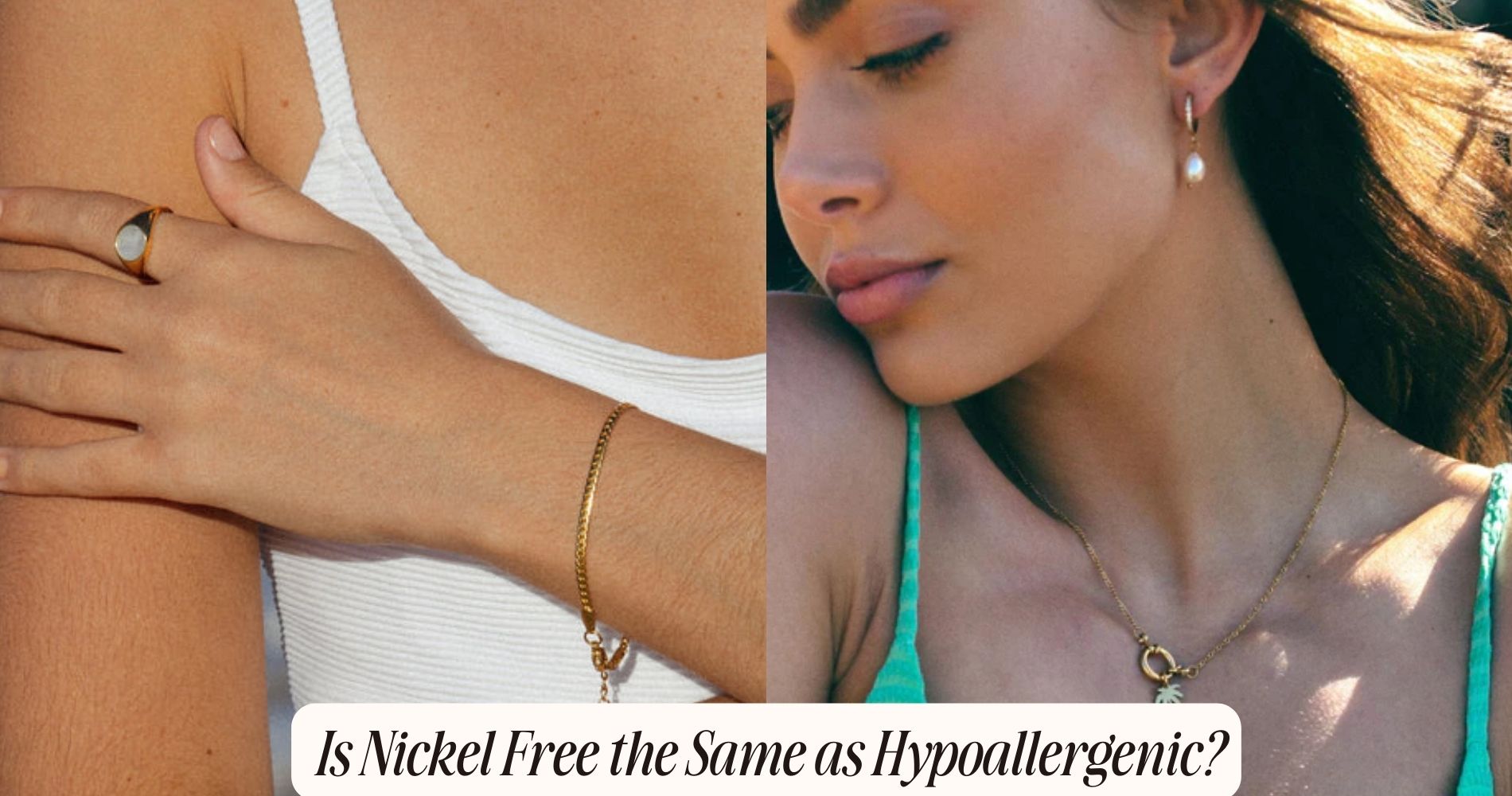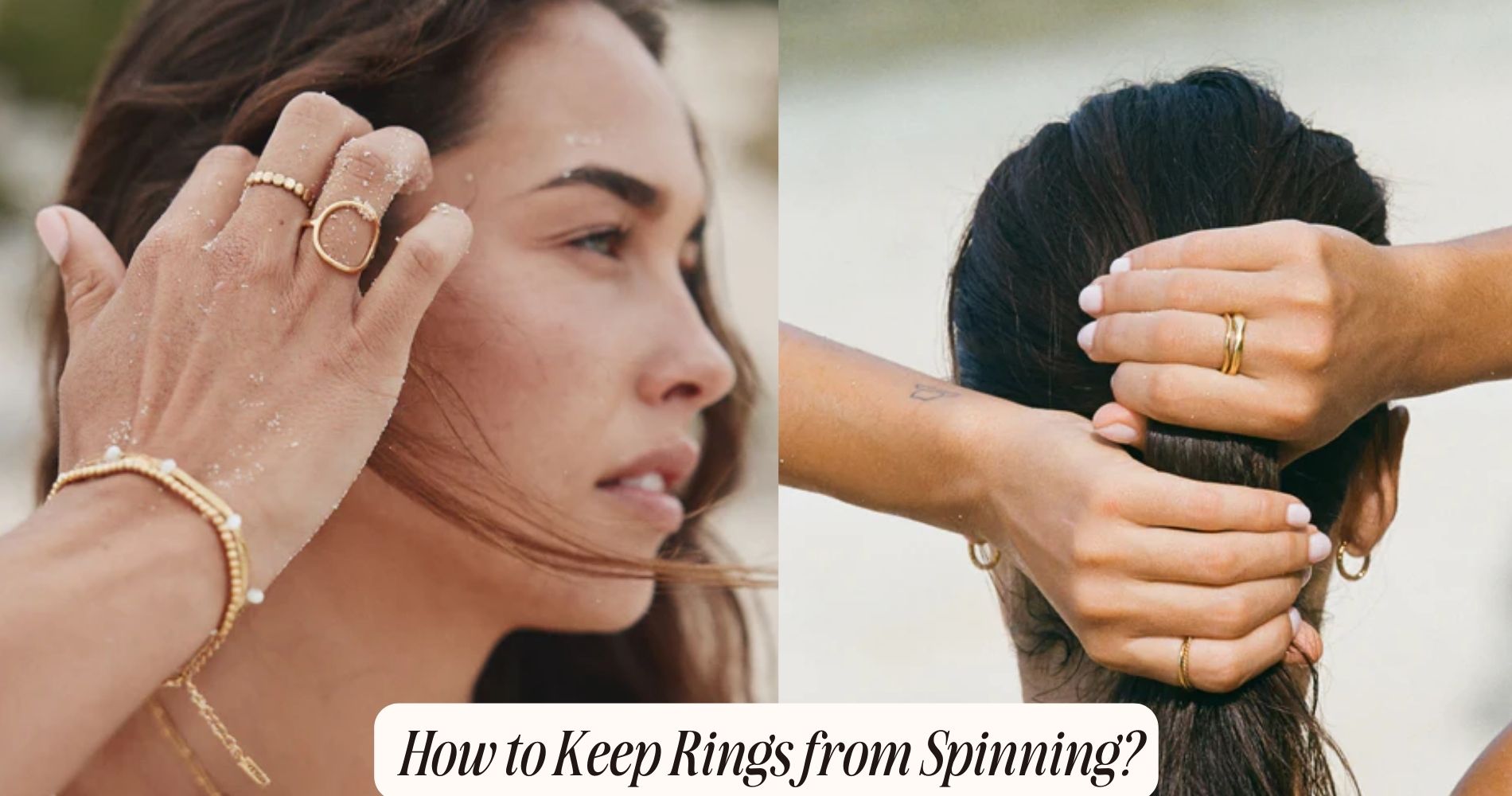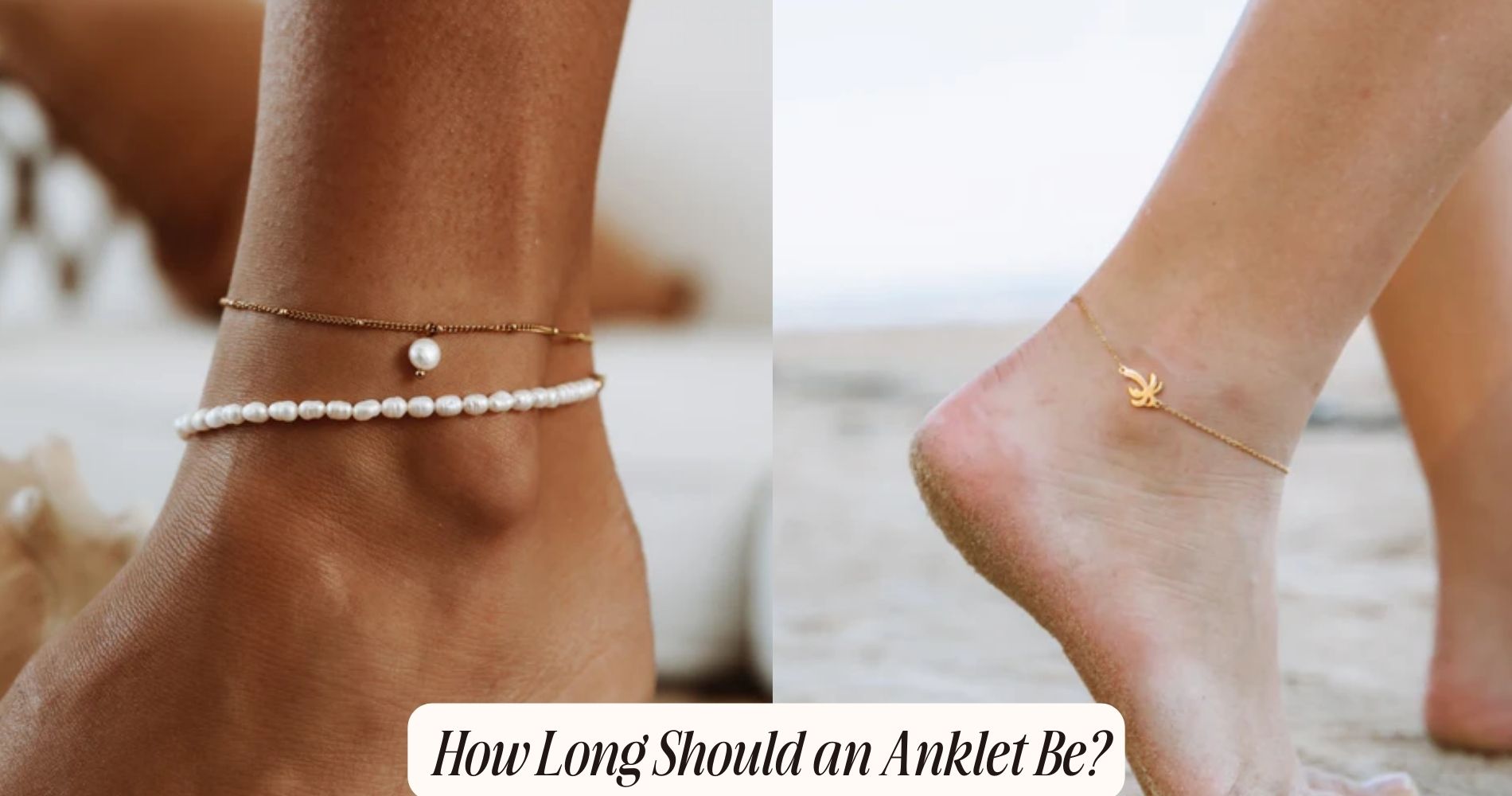
Is Nickel Free the Same as Hypoallergenic?
Defining Nickel Free
Nickel free products are specifically designed to contain no detectable levels of nickel, minimizing the risk of allergic reactions. When you choose nickel free items, you're opting for materials that have undergone rigorous testing to guarantee they don't contain this common allergen.
Nickel mining is the process through which nickel is extracted from ores, and it's prevalent in various industrial applications. However, exposure to nickel can lead to contact dermatitis, an inflammatory skin condition.
To mitigate these risks, manufacturers are increasingly turning to nickel alternatives. Materials such as stainless steel (specifically grades like 316L), titanium, and certain plastics are commonly used in nickel free products. These alternatives offer comparable durability and functionality without the risk of nickel exposure.
Evidence shows that even minimal nickel contact can trigger allergic responses in sensitive individuals. Thus, adopting nickel free products is a proactive measure for those prone to nickel allergy.
Extensive research supports that avoiding nickel can greatly reduce the incidence of dermatitis and other related symptoms. By understanding the implications of nickel mining and choosing nickel alternatives, you prioritize your health and well-being.
Understanding Hypoallergenic
While nickel free options provide a targeted solution for avoiding nickel-induced contact dermatitis, hypoallergenic products aim to minimize the risk of triggering allergic reactions across a broader range of potential allergens. When you see the term 'hypoallergenic,' it means the product is designed to be less likely to cause an allergic response. However, it doesn't guarantee that you're completely safe from allergy triggers. Manufacturers often formulate hypoallergenic products by excluding common allergens like fragrance, latex, and certain preservatives.
You might encounter hypoallergenic myths, such as the belief that these products are entirely allergen-free. This misconception can lead to unwarranted confidence, potentially resulting in exposure to other allergens. Medical professionals stress that the term 'hypoallergenic' isn't strictly regulated, meaning that product effectiveness can vary widely.
To navigate this landscape, you should scrutinize ingredient lists and recognize your specific allergens. Evidence-based research underscores the importance of personalized allergen avoidance strategies. For instance, patch testing can help identify individual sensitivities.
While hypoallergenic products offer a broader safety net, they're not a one-size-fits-all solution. By understanding the limitations and potential allergy triggers, you can make informed choices to better manage your allergies.
Nickel Allergy Symptoms
Experiencing contact dermatitis, characterized by itching, redness, and swelling, is a common symptom of a nickel allergy. When your skin comes into contact with nickel, your immune system identifies the metal as a harmful substance. This triggers an allergic reaction, leading to rash development at the site of contact.
The rash often presents with small blisters, which can become crusty or scaly if left untreated. You might notice that the symptoms intensify with prolonged exposure to nickel-containing items, such as jewelry, belts, or even mobile phones. In severe cases, the allergic reaction can spread beyond the initial contact area, causing widespread discomfort.
To manage these symptoms, it's essential to remove the source of nickel exposure immediately. For itch relief, over-the-counter hydrocortisone creams or antihistamines can be effective. Applying cool compresses and moisturizing the affected area can also provide symptomatic relief.
Long-term management requires identifying and avoiding nickel-containing products. If you're unsure whether an item contains nickel, using a nickel test kit can be helpful. Consulting a dermatologist for personalized advice and potential alternative metal options can further aid in managing your nickel allergy effectively.
Common Hypoallergenic Metals
Have you ever wondered which metals are considered hypoallergenic and safe for sensitive skin? When it comes to minimizing allergen exposure, several alternative metals offer excellent options. Titanium is highly regarded due to its biocompatibility and minimal risk of allergic reactions. It's often used in medical implants for this reason.
Platinum, another hypoallergenic metal, is a great choice for jewelry. Its inert nature guarantees it won't react with your skin, reducing the likelihood of irritation. Surgical-grade stainless steel, often used in medical instruments, is another viable option. It contains lower nickel content than regular stainless steel, thereby reducing the risk of allergen exposure.
Niobium is less commonly known but is incredibly safe for sensitive skin. It's often used in body piercings because it doesn't corrode or provoke allergic reactions.
Testing for Nickel Content
Testing for nickel content in metals is essential for ensuring they're safe for individuals with nickel allergies. To determine nickel presence, you can use a variety of methods, including chemical tests and laboratory analysis.
One commonly used chemical test is the dimethylglyoxime (DMG) test. In this test, a reagent reacts with nickel ions, producing a pink or red color if nickel is present. This method is quick, straightforward, and can be performed at home with a commercially available test kit.
For more precise results, laboratory analysis is recommended. Techniques such as atomic absorption spectroscopy (AAS) or inductively coupled plasma mass spectrometry (ICP-MS) can detect even trace amounts of nickel in metal samples. These methods are highly sensitive and provide quantitative data, ensuring a thorough understanding of the metal's composition.
Benefits of Nickel-Free Jewelry
When you choose nickel-free jewelry, you're selecting a skin-friendly option that greatly reduces the risk of contact dermatitis.
Nickel exposure is a common trigger for allergic reactions, with symptoms like itching, redness, and swelling.
Skin-Friendly Choice
Opting for nickel-free jewelry greatly reduces the risk of allergic contact dermatitis and other skin irritations. Nickel is a common allergen that can cause severe reactions, especially in individuals with sensitive skin. By choosing nickel-free options, you're selecting pieces with a chemical composition designed to minimize adverse skin responses. This approach aligns with increasing consumer demand for safer, more skin-friendly alternatives.
Nickel-free jewelry is typically composed of materials such as stainless steel, titanium, or platinum, all of which are less likely to trigger allergic reactions. These metals not only guarantee safer wear but also provide durability and aesthetic appeal. The medical community supports using nickel-free alternatives for individuals prone to skin issues, emphasizing the importance of avoiding known irritants.
Additionally, the rising awareness of skin health has led to a significant shift in consumer behavior. People are now more informed about the potential hazards of nickel and actively seek out hypoallergenic options. This trend reflects a broader movement towards prioritizing personal health and well-being.
Reduced Allergy Risk
Opting for nickel-free jewelry greatly decreases the risk of allergic reactions and dermatitis. Nickel is a common allergen and a significant trigger for contact dermatitis, a skin condition causing redness, itching, and swelling. By selecting nickel-free options, you're effectively implementing a proactive strategy in allergy management.
When you wear nickel-free jewelry, you eliminate one of the primary allergy triggers. Research indicates that nickel allergies affect approximately 10-20% of the population, making it a prevalent issue. The absence of nickel in your jewelry reduces the likelihood of developing allergic contact dermatitis, which can be both uncomfortable and chronic.
Moreover, nickel-free jewelry is particularly beneficial for individuals with sensitive skin or pre-existing skin conditions. Avoiding this common allergen helps maintain skin integrity and prevents exacerbation of symptoms. Healthcare professionals often recommend nickel-free materials like surgical-grade stainless steel, titanium, or platinum for those prone to metal allergies.
Choosing Hypoallergenic Jewelry
When choosing hypoallergenic jewelry, prioritize materials like titanium and surgical-grade stainless steel to minimize allergic reactions.
Assess your skin sensitivity, as individual tolerance levels vary greatly.
Always opt for trusted brands known for rigorous testing and quality control to guarantee safety.
Material Selection Importance
Choosing hypoallergenic jewelry is crucial for preventing allergic reactions and ensuring skin safety. When selecting such pieces, you need to take into account material durability and aesthetic appeal.
Materials like surgical-grade stainless steel, titanium, and platinum are renowned for their hypoallergenic properties and long-lasting nature. These metals resist corrosion and wear, reducing the chance of skin irritation over time.
Surgical-grade stainless steel is particularly notable for its material durability. It contains minimal nickel, greatly reducing the likelihood of allergic reactions. Titanium, another excellent choice, is both lightweight and biocompatible, making it suitable for individuals with sensitive skin. Platinum, while more expensive, offers a luxurious look and high resistance to tarnish, ensuring both comfort and aesthetic appeal.
Additionally, you should be aware that some metals marketed as 'nickel-free' might still contain trace amounts of nickel. Verify the composition of the jewelry to make sure it meets hypoallergenic standards.
Investing in high-quality materials not only enhances your skin's health but also provides lasting beauty and functionality. By prioritizing hypoallergenic options, you can enjoy jewelry that's both safe and stylish, minimizing the risk of adverse skin reactions.
Skin Sensitivity Factors
Understanding skin sensitivity factors is essential for selecting hypoallergenic jewelry that minimizes allergic reactions.
First, identify common skin irritants such as nickel, which is a prevalent allergy trigger. Nickel can cause contact dermatitis, characterized by redness, itching, and inflammation. If you're sensitive to nickel, you'll need to choose jewelry labeled nickel-free.
Besides nickel, other metals like cobalt and chromium are also known allergy triggers. Always check the composition of the jewelry you're interested in. Hypoallergenic options often include materials like titanium, surgical-grade stainless steel, and platinum, which are less likely to cause adverse reactions.
You should also consider any pre-existing skin conditions like eczema or psoriasis, which can make your skin more susceptible to irritants. Consulting a dermatologist can provide you with a patch test to pinpoint specific allergens. Keep in mind that hypoallergenic doesn't mean allergy-proof; it just reduces the risk of a reaction.
When selecting hypoallergenic jewelry, prioritize items that are clearly labeled and come from reputable sources. This reduces the likelihood of encountering undisclosed allergens.
Tips for Sensitive Skin
People with sensitive skin should always conduct patch tests before using new products to prevent adverse reactions. Ensuring ideal skin hydration is essential. Use moisturizers containing ceramides and hyaluronic acid to maintain the skin's moisture barrier and prevent dryness and irritation.
Proper exfoliation is vital, but you should avoid harsh scrubs. Opt for chemical exfoliants with alpha hydroxy acids (AHAs) or beta hydroxy acids (BHAs), which gently remove dead skin cells without causing micro-tears.
When choosing skincare products, look for labels that specify 'fragrance-free' and 'non-comedogenic.' Fragrances and comedogenic substances can exacerbate sensitivity and lead to breakouts. Mineral-based sunscreens with zinc oxide or titanium dioxide are typically gentler on sensitive skin compared to chemical sunscreens.
Avoid products with known irritants such as alcohol, sulfates, and parabens. These ingredients can disrupt the skin's natural barrier, leading to increased sensitivity and inflammation.
Lastly, maintain a simple skincare routine. Overloading your skin with too many products can increase the risk of reactions. Stick to a gentle cleanser, a hydrating moisturizer, and a broad-spectrum sunscreen to keep your sensitive skin healthy and protected.
Frequently Asked Questions
Can Nickel-Free Jewelry Cause Allergic Reactions?
Yes, nickel-free jewelry can still cause skin reactions. Other metals or materials might trigger allergy symptoms. Always check product details and consult with a dermatologist to identify any potential allergens in your jewelry.
How Can I Tell if My Jewelry Is Nickel-Free?
To determine if your jewelry is nickel-free, perform a nickel testing kit. These kits can identify nickel presence. If you experience allergy symptoms like itching or rash, your jewelry might contain nickel.
What Are Common Materials Used in Hypoallergenic Jewelry?
Common materials in hypoallergenic jewelry include titanium and platinum. Titanium jewelry is biocompatible, reducing allergic reactions. Platinum earrings also offer hypoallergenic properties due to their purity and resistance to corrosion, minimizing skin irritations.
Are There Regulations for Labeling Jewelry as Nickel-Free?
Yes, there are labeling requirements for nickel-free jewelry to safeguard consumer protections. Regulations mandate accurate labeling to prevent allergic reactions, and compliance with these standards is essential for manufacturers. Always verify product claims for your safety.
Can I Develop a Nickel Allergy Over Time?
Yes, you can develop a nickel allergy over time. Cumulative exposure to nickel can trigger the sensitization process, where your immune system becomes hyper-reactive, leading to allergic reactions even to small amounts of nickel.
Conclusion
Choosing nickel-free and hypoallergenic jewelry is essential for individuals with sensitive skin or nickel allergies. Nickel-free items eliminate the risk of allergic reactions, while hypoallergenic options minimize irritants.
Look for metals like titanium, platinum, or surgical-grade stainless steel. Always check for nickel content and opt for certified hypoallergenic pieces.
By making informed choices, you can enjoy stylish jewelry without compromising your skin's health. Prioritize your well-being with evidence-based, skin-friendly options.

























Leave a comment
This site is protected by hCaptcha and the hCaptcha Privacy Policy and Terms of Service apply.